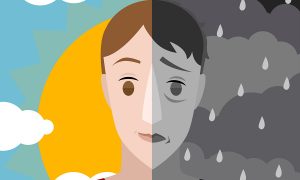
Introduction
Smoking, a practice done mostly for recreation, have been proven by several studies to have a damaging impact on the smoker’s health. With over 600 million smokers worldwide and about 30 million of them in the US, smoking is steadily becoming a global health challenge over the years, leaving about half of all smokers with a smoking induced disease.
What if you have someone who often smokes around you? It could be a close friend, neighbor, or in-house relative, then, you may become a secondhand smoker, otherwise a passive smoker. A good number of these recent studies also raised alarm on the impact of smoking on the non-intended smokers. They cite that getting exposed to tobacco or cigarette smoke, carries almost equal risk as smoking the tobacco or cigarette itself.
When do you become a passive smoker?
Second hand smoking or Environmental Tobacco Smoke (ETS) can occur when an accidental neighbor inhales the side stream smoke of the burning end of a lighted cigarette, and/or the exhaled mainstream smoke by a smoker. Either of these processes will introduce both the smoke, and over 70 of the carcinogenic particles in the tobacco into the lungs and bloodstream.
Passive smoking is an unpleasant event, especially when the passive smoker is not a tobacco user. In most of these cases, the passive smokers are rather irritated by the odor from the smoke, and not the more harmful carcinogens from the burning end of the cigarette which lacks a filter.
Dangers of passive smoking
Before now, it has been unknown to many that passive smoking bears as much imperilment as active smoking. Almost all the health risks associated with active smoking are also linked to passive smoking, including heart diseases, stroke and other cardiovascular diseases, respiratory tract diseases, cancers of the lungs, esophagus, pancreas, stomach, colon, etc.
Pregnant mothers, who are usually unsuspecting of the smokers in their environment, are also liable to expose the unborn babies to the deleterious effects of tobacco smoking, like Sudden Infant Death (SID).
Passive smokers are also vulnerable to the baneful psycho social effect of smoking- withdrawal syndrome, unwillingness to engage in social gatherings due to the persistent odor of tobacco, progression to active smoking and addiction.
Curtailing passive smoking
The eradication of smoking, as well as passive smoking, will be of extreme value for an overall improvement in the Global Health Security. Smoking has become a weighty health burden because of its huge input to the global mortality rate, being one of the leading most avoidable causes of death. All the same, passive smoking can be gradually wiped out by a synergistic effort involving both government policies and public enlightenment.
Government policies discouraging smoking, and prohibiting smoking in public places, should be enacted and severely enforced. Also, Institutions- both big and small organizations, should be encouraged to constantly educate its members on what passive smoking entails, and the harms associated with it.
Conclusion
Passive smoking, which is an unplanned inhalation of mainstream or side stream smoke of an active smoker, have shown to be associated with the same cardiovascular, respiratory, and other health risks found in active smokers. With adequate government policies and proper sensitization, this global hazard can be repealed.
Onyeka, N. Victor
Clinical Medical Student,
Nnamdi Azikiwe University, Nigeria.
Onyeka, Nnaemeka Victor is a passionate content and copywriter. He is also a lover of poetry which have gotten him many publications.
Currently a clinical medical student, he has been privileged to get involved in so many philanthropic activities driven by passion to see a better world.
He simply loves writing, especially poetry and medical articles.


